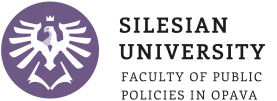Ošetřovatelské perspektivy 2021, 4(2):13-23 | DOI: 10.25142/osp.2021.008
MIDWIFERY CARE FOR A MONGOLIAN WOMAN
- 1 Katedra sociální a kulturní antropologie, Fakulta humanitních studií, Univerzita Karlova v Praze
Background: Due to the number of births of foreigners in the Czech Republic, Mongolians rank fifth in the table of statistical data. It is undoubtedly useful to become acquainted with the possible sociocultural specifics associated with one abduction of nursing care, including the specialized care of a midwife, in addition according to the growing number of Mongolian families in our country.
Aim: The aim of the article is to outline possible peculiarities that a midwife may encounter during the transcultural nursing care for a Mongolian woman.
Methods: The research was based on qualitative survey using semi-structured interviews with Mongolian women living in the Czech Republic.
Results: The research survey revealed a many of peculiarities and differences related to the birth of offspring to Mongolian women. The mentioned specifics manifested themselves in the field of pregnancy, childbirth and the puerperium. The influences of traditional Mongolian medicine are significantly reflected in all these areas.
Conclusion: Despite the modernization and progress of today's healthcare, we can still encounter influences, even preferences, of traditional folk medicine concepts at the expense of official medical knowledge. To this day, Mongols follow natural laws, and belief in the power of folk practices often competes with the seemingly unquestionable principles of modern medicine. For the mental well-being of each woman, it is
necessary to identify her individual requirements, the form of which can be very unusual, especially when caring for a foreign woman. Only an educated and knowledgeable midwife can take individual demands into account for the benefit of each individual woman.
Keywords: Mongolia, folk medicine, transcultural, obstetric, midwife
Received: May 9, 2021; Revised: May 9, 2021; Accepted: June 13, 2021; Published: January 25, 2022 Show citation
References
- ATWOOD, C. P. et al. Encyclopedia of Mongolia and the Mongol Empire. New York: Facts On File, Inc., 2004. ISBN 0-8160-4671-9.
- BAŠKOVÁ, M. Metodika psychofyzické přípravy na porod. Praha: Grada, 2015. ISBN 978- 80-247-9728-1.
- BRODSKÝ, J. Češi a Mongolové - sedmdesát let spolu. Praha: MZV ČR, [online], 2020. [cit. 8. 5. 2021]. Dostupné z: www.mzv.cz/ulaanbaatar/cz/x60_vyroci_diplomatickych_ vztahu/kulturni_akce/x2020_01_01/cesi_a_mongolove_sedmdesat_let_spolu.html.
- COLLEONI, A. The history of Mongolian Traditional Medicine. Trieste: Italo Svevo, 2009. ISBN 978-88-6268-172-8.
- ČSÚ. Narození cizinci v ČR podle státního občanství v letech 1995-2019. Praha: Český statistický úřad, [online], 2019. [cit. 8. 5. 2021]. Dostupné z: https://www.czso.cz/csu/cizinci/4-ciz_demogr_udalosti.
- EMBER, C. R., EMBER, M. Encyclopedia of Medical Anthropology: Health and Illness in the World´s Cultures. New York: Springer, 2004. ISBN 0-306-47754-8.
 Go to original source...
Go to original source... - GROLLOVÁ, I., ZIKMUNDOVÁ, V. Mongolové: Pravnuci Čingischána. Praha: Triton, 2000. ISBN 80-7254-079-3.
- HENDL, J. Kvalitativní výzkum: Základní teorie, metody a aplikace, 3. vydání. Praha: Portál, 2012. ISBN 978-80-262-0219-6.
- KREGER, N. E. Five Fast Fixes. Elsevier Inc., Clinical Simulation in Nursing. 2009, vol. 5, no. 2, p. 85-87. ISSN 1876-1399.
 Go to original source...
Go to original source... - LEININGER, M., McFARLAND, M. R. Transcultural Nursing: Concepts, Theories, Research, and Practice, Third edition. New York: McGraw-Hill Companies, Inc., 2002. ISBN 0-07- 135397-6.
 Go to original source...
Go to original source... - MAREK, V. Nová doba porodní: život před životem, porod jako zázrak, první tři minuty a jak dál: přirozený porod jako cesta ke společnosti bez násilí. Praha: Eminent, 2002. ISBN 80-7281-090-1.
- NSO. Socio-economic situation of Mongolia: Statistical bulletin, 11/2020. Ulaanbaatar: National statistics office of Mongolia, [online], 2020. [cit. 8. 5. 2021]. Dostupné z: https://www.en.nso.mn/article/344.
- OBERFALZEROVÁ, A. Metaphors and Nomads. Praha: Triton, 2006. ISBN 80-7254-849-2.
- PILLITTERI, A. Maternal & Child Health Nursing: Care of the Childbearing & Childrearing Family, 6th edition. Philadelphia: Lippincott Williams & Wilkins, 2010. ISBN 9781582559995.
- TÓTHOVÁ, V. et al. životní styl mongolské minority v České republice. Kontakt. 2011, roč. 13, č. 3, s. 275-286. ISSN 1804-7122.
 Go to original source...
Go to original source... - TOUŠEK, L. et al. Kapitoly z kvalitativního výzkumu. Plzeň: Zápodočeská univerzita v Plzni, 2015. ISBN 978-80-261-0471-1.
- TSENG, W.-S., STRELTZER, J. Cultural Competence in Health Care. New York: Springer, 2008. ISBN 978-0-387-72170-5.
 Go to original source...
Go to original source... - VARGAS-O´BRYAN, I. Disease, Religion and Healing in Asia: Collaborations and collisions. New York: Routledge, 2015. ISBN 978-1-138-02365-9.
 Go to original source...
Go to original source... - WHO. Medicinal plants in Mongolia. Western Pacific Region: World Health Organization, 2013. ISBN 978-92-9061-632-0.
- WHO. WHO recommendations: Intrapartum care for a positive childbirth experience. Geneva: World Health Organization, 2018. ISBN 978-92-4-155021-5.
This is an open access article distributed under the terms of the Creative Commons Attribution 4.0 International License (CC BY 4.0), which permits use, distribution, and reproduction in any medium, provided the original publication is properly cited. No use, distribution or reproduction is permitted which does not comply with these terms.



